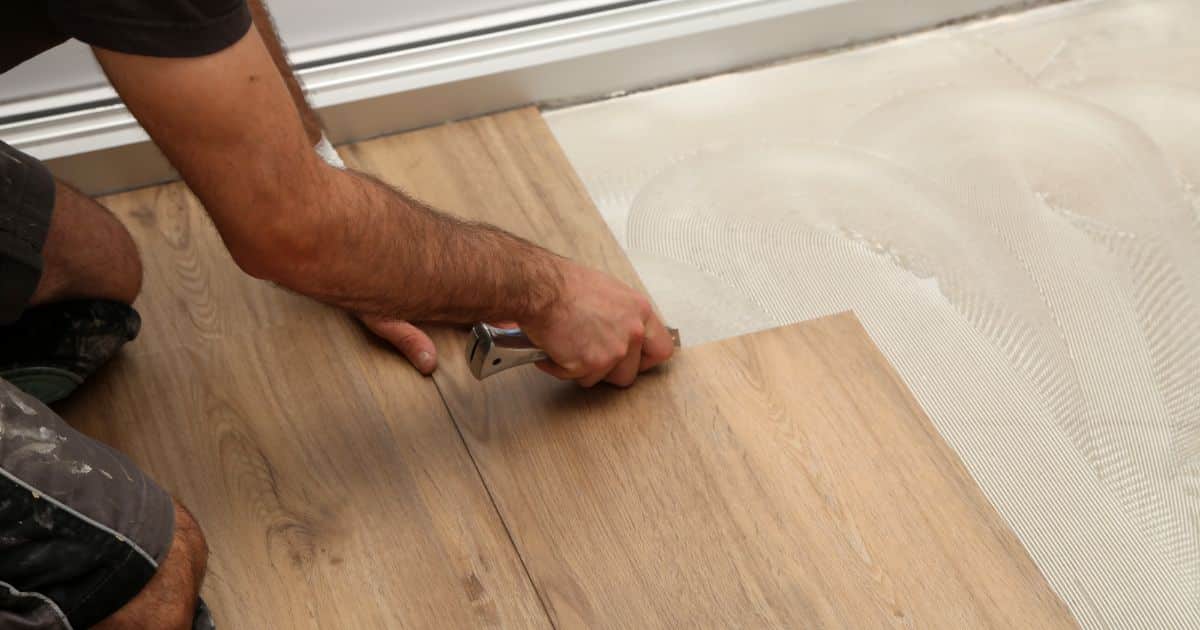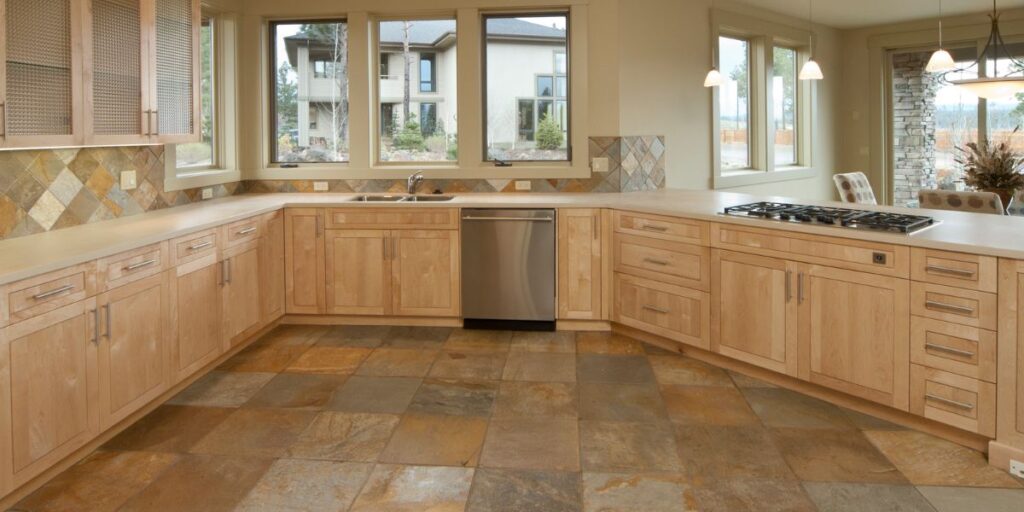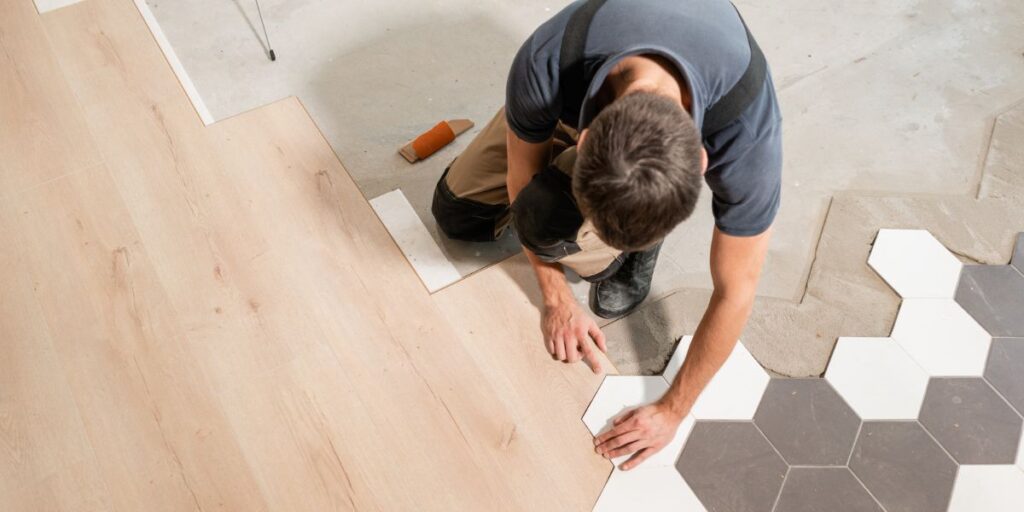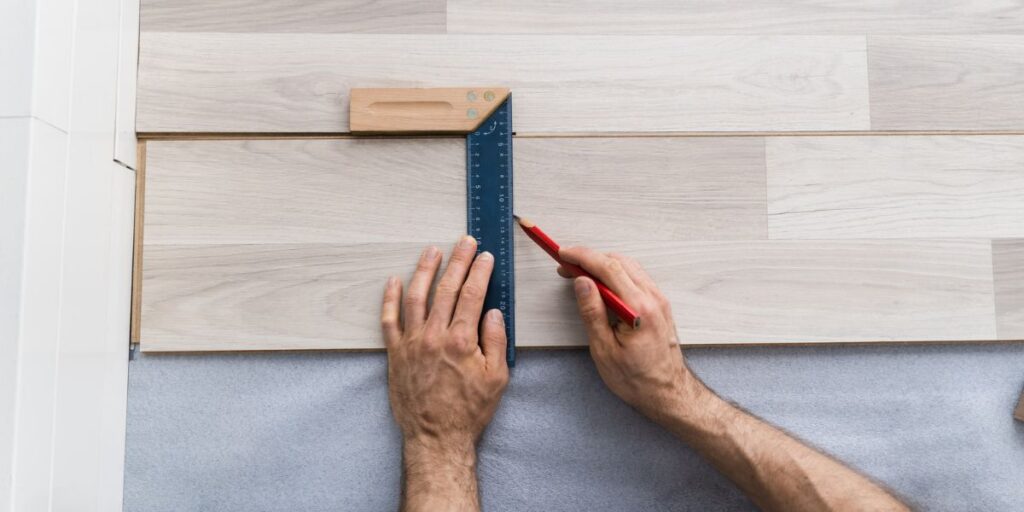
Vinyl plank flooring has become a go-to choice for many homeowners in recent years. And it’s not hard to see why. This type of flooring is durable, affordable, and versatile, making it an attractive option for many different types of spaces.
But with so many different types of vinyl plank flooring available on the market today, it can be hard to know which one to choose or how to install it correctly. One question that often comes up when installing vinyl plank flooring is which direction to lay the planks.
Which direction to install vinyl plank flooring? It may seem like a small detail, but the direction in which you install your flooring can have a big impact on the overall look and feel of your space. In this article, we’ll take a closer look at this important decision and offer some tips and guidance on which direction to choose when installing your vinyl plank flooring.
Why Vinyl Plank Flooring is So Popular
Before we dive into the nitty-gritty of directional installation, let’s first take a moment to explore why vinyl plank flooring has become such a popular option among homeowners. One big advantage of this type of flooring is its durability.
Vinyl planks are made from tough materials that can withstand heavy foot traffic and resist scratches or stains. This makes them ideal for high-traffic areas like entryways or kitchens.
Another benefit of vinyl plank flooring is its affordability. Unlike hardwood or tile floors, vinyl planks are relatively inexpensive and easy to install yourself (saving you money on professional installation fees).
Vinyl planks are incredibly versatile in terms of style options. They come in a wide range of colors, finishes, and textures that can mimic the look and feel of other popular materials like hardwood or stone without breaking the bank.
RELATED: Expert Tips for Keeping Your Cork Floors Clean and Beautiful
The Importance of Directional Installation
Now let’s get down to business: why does directional installation matter when it comes to laying vinyl plank flooring? The main reason is that the direction in which you lay your planks can impact the overall appearance and flow of your space.
For example, laying your planks horizontally can help elongate a room and make it feel more spacious. On the other hand, laying them vertically can create a more traditional or formal look.
In addition to aesthetics, directional installation can also impact how easy it is to install your planks around obstacles like doorways or cabinets. So taking the time to consider which direction to lay your planks is definitely worth the effort.
The Basics of Vinyl Plank Flooring
What is Vinyl Plank Flooring?
Vinyl plank flooring is a type of synthetic flooring made from a combination of PVC (polyvinyl chloride) and other materials. It’s designed to mimic the look and feel of real wood but without the high cost or maintenance requirements. The planks come in various sizes, colors, and styles to suit any design preference.
Composition
Vinyl plank flooring consists of four layers: the wear layer, the printed design layer, the core layer, and the backing layer. The wear layer is a clear protective coating that prevents scratches and scuffs. The printed design layer features a high-resolution image of wood or stone texture that gives it its realistic appearance.
The core layer provides stability and durability with its rigid structure composed of PVC resin and limestone powder. The backing layer acts as a moisture barrier to prevent water damage.
Benefits
There are many reasons why vinyl plank flooring has gained popularity among homeowners in recent years. One of its main benefits is durability; it can withstand heavy foot traffic without showing signs of wear or tear.
Unlike hardwood floors, it’s also waterproof, making it an excellent choice for bathrooms and kitchens where spills are common. In addition to being durable, vinyl plank flooring is also affordable compared to other types of flooring, such as ceramic tiles or hardwoods.
Another major benefit is the ease of installation; most vinyl plank flooring products feature a click-and-lock mechanism that allows for easy installation without professional help. This means homeowners can save money on labor costs by installing it themselves.
Overall, vinyl plank flooring offers numerous benefits for those looking for an affordable yet durable option for their home’s floors. Its composition with four layers makes it long-lasting while still having an attractive appearance at an affordable price point, making it very appealing not only to homeowners.
Which Direction to Install Vinyl Plank Flooring?
You might think that installing vinyl plank flooring is as easy as just laying it down in any direction you, please. But let me tell you, the direction in which you install your vinyl plank flooring matters, and it matters a lot.
Not only can it affect the overall appearance and flow of your space, but it can also impact the durability and longevity of your flooring. One of the most important things to consider when deciding on the direction to install your vinyl plank flooring is the layout of your room.
For example, if you have a long, narrow room, installing the planks horizontally can help create the illusion of a wider space. On the other hand, if you have a square or symmetrical room, vertical installation can help add height and symmetry to your space.
Another consideration when choosing directional installation is the amount of traffic that will be passing through your room. If you anticipate heavy foot traffic in one particular area of your space, consider installing planks perpendicular to that area’s traffic flow to help prevent wear and tear over time.
When deciding on directional installation, also think about how it will affect other design elements in your space, such as furniture placement and decor. Installing planks parallel to furniture or architectural features such as windows or doors can create a sense of continuity throughout the entire room.
Don’t underestimate how much thought should go into directional installation when laying down vinyl plank flooring. It can make all the difference between an average-looking room and one with visual interest, flow, and durability that will last for years to come.
Horizontal vs. Vertical Installation
Why Horizontal is Overrated
When it comes to vinyl plank flooring installation, many homeowners default to the horizontal method without giving much thought to other options. While it certainly has its merits, I’m here to tell you that horizontal installation is overrated. Yes, it can make a space feel wider and larger than vertical installation does.
However, this effect is minimal in smaller rooms and can sometimes look too busy or chaotic in larger spaces. Additionally, once you choose horizontal installation for one room, you might feel obligated to continue that pattern throughout the entire house – limiting your design possibilities.
Why Vertical is Underrated
On the other hand, vertical vinyl plank flooring installation doesn’t get enough love. It may not be as common as horizontal installation but it has its own set of benefits that should not be ignored. Vertical vinyl plank flooring creates a calming and soothing look.
It can make your walls appear longer and taller which gives off a sense of grandness while also creating an illusion of more space. Vertical lines tend to draw your eyes upwards, which could make your ceilings appear higher or more dramatic.
The Best of Both Worlds: Mixing Horizontal and Vertical
If you’re looking for a way to take advantage of both methods without committing fully to either one, consider mixing them up! Alternating between the two methods or even having diagonal lines in certain areas on open-concept floors will create an eye-catching design feature unique just for you. There’s no right or wrong answer when it comes to choosing which direction to install your vinyl plank flooring – it’s all about what will work best for your home’s unique layout and your personal preferences.
Be creative with the patterns and styles you use! Play around with different layouts until you find the perfect balance between functionality and beauty.
Creative Considerations for Directional Installation
Diagonal Installation: Adding a Dynamic Touch
When it comes to installing vinyl plank flooring in your home, don’t be afraid to get creative with the placement of your planks. One way to add a dynamic touch to your space is by installing the planks diagonally.
This technique not only adds visual interest but can also make a small room appear larger. By placing the planks at an angle, you create an optical illusion that draws the eye towards the corners of the room, creating a sense of depth and dimension.
This effect can be especially effective in narrow spaces such as hallways or entryways. To achieve this look, start by finding the center point of your room and laying your first plank at a 45-degree angle from that point.
Continue laying subsequent planks at the same angle until you reach the edges of the room. Be sure to cut any necessary pieces along walls or other obstacles to maintain consistency throughout.
Herringbone Pattern: Classic Elegance
Another creative option for directional installation is using a herringbone pattern. This classic design has been used for centuries and continues to add elegance and sophistication to any space.
The herringbone pattern involves laying each plank at a 90-degree angle from its neighbor, creating a distinct “V” shape that flows seamlessly throughout the room. The result is an eye-catching pattern that works well in both modern and traditional spaces alike.
When installing using this pattern, it’s important to keep each piece aligned properly so that you maintain consistency throughout. You may also want to consider mixing different shades or textures of vinyl plank flooring for added interest.
Style Considerations: Cozy vs. Formal
When thinking about which direction to install your vinyl plank flooring in, it’s important to consider how different patterns can affect the overall style and mood of your space. For example, diagonal installation can add a sense of movement and excitement to a room, while herringbone patterns tend to create a more formal and elegant atmosphere. When deciding on which pattern to use, consider the overall look and feel that you’re trying to achieve.
Do you want your space to feel cozy and inviting? Or are you looking for something that feels more formal or sophisticated?
Ultimately, the direction in which you install your vinyl plank flooring is up to personal preference. However, by considering creative options like diagonal or herringbone patterns, you can take your flooring design to the next level while adding visual interest and personality to your space.
RELATED: Oak Cabinets and Flooring: A Match Made in Heaven – How to Choose the Perfect Color
Niche Subtopics: Installing Around Obstacles
Offer tips on how to install vinyl plank flooring around obstacles like doorways, vents, or corners.
When it comes to installing vinyl plank flooring, one of the biggest challenges is dealing with obstacles like doorways, vents, and corners. But fear not! There are some simple tips and tricks you can use to make the process much easier.
Firstly, make sure you measure your space accurately and plan out your layout in advance. This will help you identify any potential problem areas and allow you to plan accordingly.
When it comes to doorways, for example, you may need to add a transition strip or reducer molding to create a smooth transition from one room to another. Another important tip is to use a jigsaw or circular saw with a fine-tooth blade for precise cuts around obstacles like vents or pipes.
You can also use a template made from cardboard or paper to trace the shape of the obstacle onto your plank before cutting it out. This will help ensure that your cuts are accurate and fit together seamlessly.
Provide detailed instructions on how to make precise cuts and fit planks together
Making precise cuts is key when installing vinyl plank flooring around obstacles like corners or irregular shapes. But how do you ensure that your cuts are accurate? Here’s what you need to know:
For straight cuts, use a measuring tape and straight-edge guide for accuracy. Make sure that your blade is sharp and use firm pressure when cutting through the plank.
For curved cuts or irregular shapes, trace the shape onto your plank using a template made from paper or cardboard. Use a fine-tooth jigsaw or circular saw blade for precision.
When fitting planks together around obstacles like corners, be sure to leave space between the wall and the edge of the plank for expansion gaps (usually 1/4 inch). Use a tapping block to ensure a tight fit and prevent any gaps from forming.
Frequently Asked Questions
In which direction should you lay vinyl plank flooring?
The general recommendation is to lay vinyl plank flooring parallel to the longest wall in the room. This creates a visually appealing and natural flow to the space.
How do I choose the direction of my plank flooring?
When choosing the direction of your plank flooring, consider the room’s shape, the placement of natural light sources, and the location of the main entrance. Opt for the direction that enhances the overall aesthetic and creates a sense of continuity.
Can you install vinyl plank flooring in either direction?
Yes, vinyl plank flooring can be installed in either direction, but laying it parallel to the longest wall is a common practice that provides a pleasing visual effect.
What is the correct way to lay vinyl flooring?
The correct way to lay vinyl flooring is to ensure a clean, smooth, and properly prepared subfloor. Follow the manufacturer’s instructions for adhesive or click-lock installation methods, and stagger the planks for a more stable and attractive finish.
Should vinyl flooring be parallel or perpendicular?
Vinyl flooring can be installed either parallel or perpendicular to the longest wall, depending on the desired visual effect and room layout. Both directions can be suitable, but parallel installation is more commonly preferred.
Should flooring run in the same direction in all rooms?
While it is not mandatory, maintaining a consistent direction for flooring throughout adjacent rooms can create a harmonious and unified appearance. Consider factors like natural lighting, transitions, and overall design cohesion when deciding whether to run the flooring in the same direction in all rooms.
Conclusion
Installing vinyl plank flooring can be a relatively simple DIY project, even when dealing with obstacles like doorways, vents, or corners. By following these tips and tricks, you can achieve a professional-looking installation that will stand the test of time.
So go ahead and get creative with your directional installation – whether you choose vertical or horizontal patterns or opt for something more unique like diagonal or herringbone designs. With the right tools and techniques, you can transform your space into a stylish and functional oasis that you’ll enjoy for years to come.






